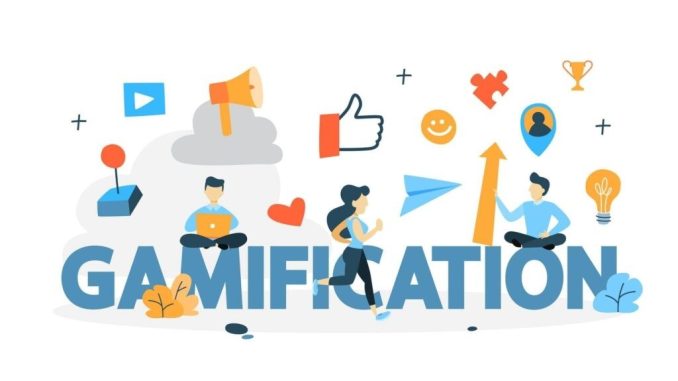
The Challenges of Game Theory
In the ever-changing field of education, we now have a powerful tool in the form of gamification to help render learning engaging or lively. This approach is spreading widely: students are expected to become active participants in their teaching. The idea “just keep it on paper for future reference” has made many educators and schools form up their own groups using game-console controllers as input devices. Think on it: In the future you might be able to enjoy painting as if you were an artist during frame 32—instead of binding yourself to still figures.
Victory
By incorporating game design elements and principles, educators have transformed the traditional learning process into something more “alive” or actively experienced. Moreover, this method not only takes students away from their desks but encourages them to participate in their environment. At the same time as this makes learning more enjoyable it also deepens the student has with material being studied.
What’s gamification all about?
At its most basic, gamification involves taking game elements – things like leaderboards, points and badges – and applying them in non-gaming contexts. In education, this means that students are set skill challenges and receive rewards for accomplishing them. Learning should make use of the underlying appeal games offer to motivate students, encouraging them further to study.
Increased Engagement: Gamification, which brings gamified elements into an interactive, immersive environment, can motivate students while they learn. When class periods turn into quests, or assignments are pursued step by step with children envisioning themselves as chivalrous knights dressed in armor (using a code easily understood by the teacher) rather than passive onlookers watching from afar, their enthusiasm helps teachers students on across all of its generations.
Instant Feedback: Games often offer immediate results which let you see how good or bad at a task you were. Similarly, gamified learning materials provide clear indications of students’ immediate performance, allowing them to correct practice errors right away and reinforcing understanding.
Enhancing Student Perseverance: As players move through levels and collect rewards in a game, they get the sensation of moving forward. In just this way, through gamification of education pupils might be encouraged to pass through difficult content areas by setting small, achievable goals and then celebrating the victories they have won.
Enabling Collaboration: Many educational games incorporate group work, where students have to team up in order either to solve a problem or achieve some task or other. This not only fosters cooperation amongst those involved but also leads to peer instruction. Kids help their classmates absorb and comprehend concepts because they can exchange information and strategies with one another.
Personalized Learning Experience:
Using the principle of gamification, adaptive technologies tailor learning experiences to individual learner needs and progress. They offer rocks and resources in accordance with student performance in Game-based learning platforms. Its reach is greatest in a group when you compare not just grades but both work quality and quantity together. In other words, no one will find that they were too far in advance or too slow behind his fellow fighters, when strength and courage came to matter at all. If you sequence through the different levels of a game carefully, stopping to keep an eye on what is happening off-stage with movements and developments in those games, learning becomes dynamic rather than static. It is now routine for students to correct mistakes they are making along the way using tips gleaned from games or innate clues hidden within game play functionality and design features.
Implement Game Elements in the Classroom:
Integrate Basic Game Elements
Start by introducing basic game elements such as points, badges, and leaderboards into your lessons. These can be used to keep track of your students’ progress while rewarding their achievements, making learning more engaging.
Create Interactive Challenges
Create lessons that require student participation in simulations or interactive challenges. For example, a history class could be turned into an adventure in which students travel back through time to various periods of history and receive rewards for answering questions correctly about each period.
Use Gamified Learning Platforms
Explore the systems and apps of all kind that teach learning through play. Gamified learning programs will be available, and suitable for integration into your education content.
Encourage Student Participation
Involve students in the crafting of these game-based learning activities. Let them contribute their suggestions or new ideas for rewards, thereby strengthening their commitment and participation in the learnfare process.
Evaluate and Monitor
Regularly evaluate the effectiveness of your gamification strategies in a structured way that invites student collaboration. Asking for feedback from anyone who was in the same lecture class for a year can help you understand what people think of that teacher; it’s EQUALLY important to monitor student performance, repetitively making sure that the learners are putting their new knowledge into practice Where necessary the approach is adjusted. It is only by rigorous scrutiny and mindfulness that you can guarantee its quality & refinement.
Challenges and these things to consider
While Gamification offers users many advantages, there are also a number of possible challenges. Sometimes excessive competitions and prizes may adversely affect individuals’ work—such as added anxiety or lower internal motivation. Therefore we have to strike a balance and make sure that the world of teaching is not overshadowed by game-based elements; teachers and even administrators must both carefully consider this fact.
In a life where the pursuit of wisdom is both lively and entertaining, this game perhaps lifts people from their bookish portaments. Using the motivational power of gaming, It-says some fairy-tale scenes that bring many GEN-Y* students into understanding. As we gradually improve our methods on gamification still further an opportunity for people to re-think education and usher in an entirely new epoch of study begins to look possible.
Leave a Reply